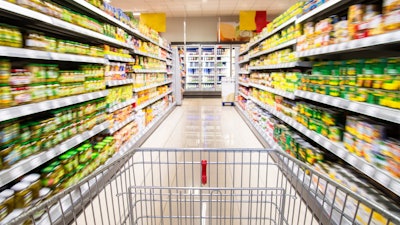
This year, food manufacturers can expect to see many of the same ongoing trends, but others will emerge this year as the ramifications from COVID-19 continue to be felt across industries. Innovation in sustainability practices will be a top priority as manufacturers adapt to growing consumer demands and ESG requirements evolve. Supply chain disruptions and widespread labor shortages will continue to make their impact and thus shift the balance between retail products and food service.
There is reason to be optimistic about this years’ industry outlook, and manufacturers are well-positioned to help customers adapt to these expected top trends:
Commitment to Sustainability
New science and data consistently point to an increasing urgency to address the human impact on climate change, and consumers are more aware than ever before about how their personal decisions, and the brands they support, impact the environment. Manufacturers are addressing customer calls to be more eco-conscious. Trends that are gaining support are shifts away from fossil fuel-based energy sources, reduced water consumption, sustainable packaging (recyclable, biodegradable, or options that significantly reduce plastic use), and clean, eco-friendly detergent and cleaning solutions for end-products and equipment.
The Rise of Plant-Based
More than half of consumers in the United States are eating more plant-based foods, and its popularity is expected to grow in 2022. Plant-based diets have increased 300% for Americans in the last 15 years, and global retail sales of plant-based food alternatives may reach $162 billion by 2030 — up from $29.4 billion in 2020. If so, the projected plant-based food market would make up 7.7% of the global protein market.
As increased health and environmental consciousness continue to drive consumer desires and decisions, manufacturing technologies should adapt accordingly. Many existing solutions are already addressing this increased demand, but manufacturers should also consider adapting to customers’ unique internal processes, the type of product being developed and the means of processing them.
Plant-based proteins and dairy alternatives are some of the most popular alternatives, and these options will continue to be at the forefront. In fact, a 2021 study conducted for the Food Marketing Institute (FMI) by The Hartman Group, indicated that 29% of shoppers are moderating meat intake, and 9% of shoppers do not eat meat products at all. The rise of culture-based proteins is also on the horizon. Cultured meat made its marketing debut almost a decade ago and will continue to rise as a leading alternative-protein source.
As these new processes scale up, specialists will work with customers to transform existing batch processes to efficient continuous processes and bring their well-established food science expertise for conventional foods to this new technology.
Increased IoT Connectivity and Automation
Across industries, digital transformation will accelerate in 2022. Historically slow and conservative in the adoption of new technology solutions, the food industry is adapting. Different sectors vary in how new tech is introduced and applied. Industry 4.0 tools will be key in the enablement of producers and processors to optimize workflow, remove production bottlenecks, improve margins and more.
In the near term, we can also expect to see an increase in automation. Food manufacturing is one of many industries facing labor shortages in the wake of the COVID-19 pandemic, shifting workforce priorities and more. This has caused immense stress on technology solutions providers to develop equipment that will help customers continue to meet their goals, but with fewer employees on-site. Expanded roles for automation, such as robotics, will be an important factor in the mitigation of human labor shortages and to enhance process efficiency and end-products for producers.
Balance Between Food Service and Retail
64% of consumers do not plan to return to their pre-pandemic habits of dining in restaurants, which has resulted in 61% of consumers ordering takeout or delivery at least once per week - up from 29% one year ago.
This is just one clear example of how the pandemic has changed consumer behavior and will continue to force the food industry to adjust as demands evolve. At the onset of COVID-19, the food service sector took a dive and retail shot up in many cases because of the decrease in demand for food typically supplied to restaurants, and increased demand for grocery stores.
The balance between these two markets will evolve even more this year, and the food manufacturing industry will need to adopt ever-changing and innovative  Douglas Woodruff
Douglas Woodruff
Douglas Woodruff is a Professional Engineer and has worked as an innovation leader in the food and packaging industries for almost 30 years in both North America and Europe. He currently leads the R&D program for JBT’s Diversified Food & Health Division.






















